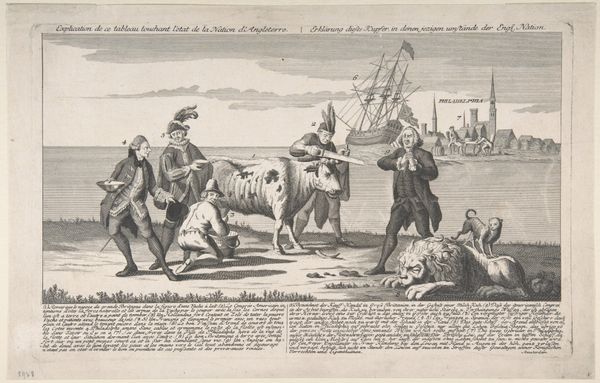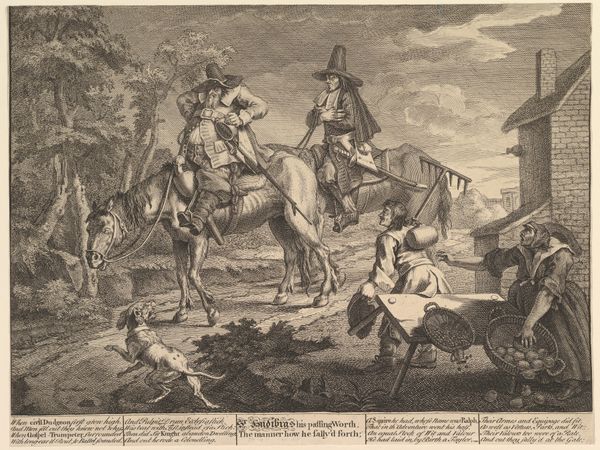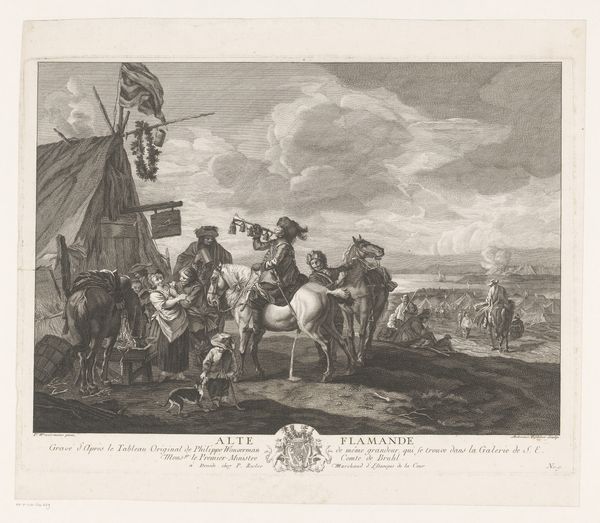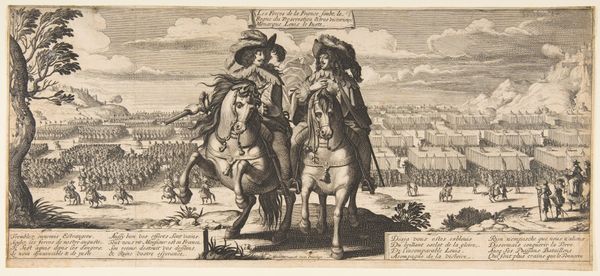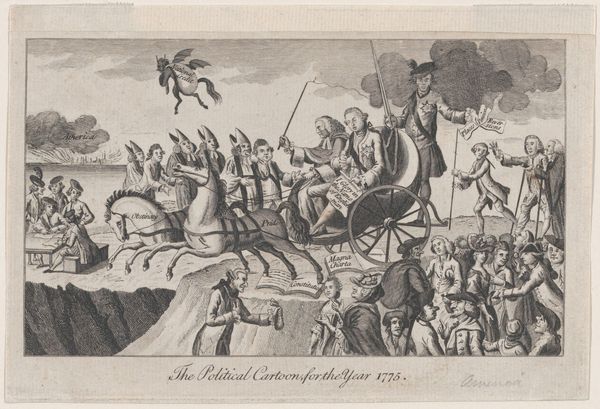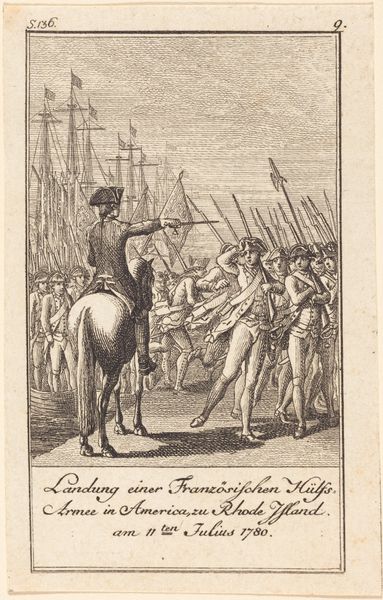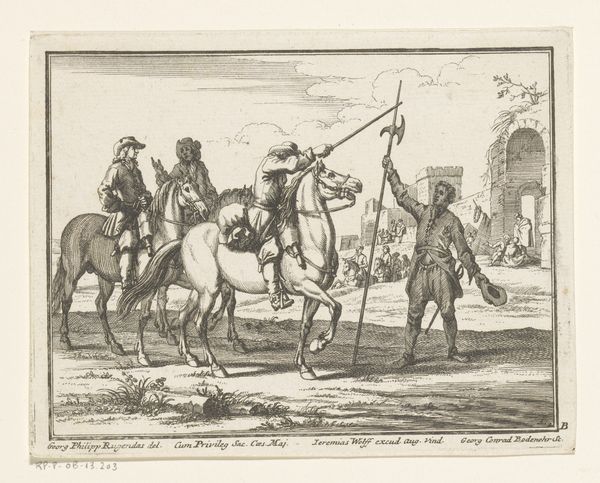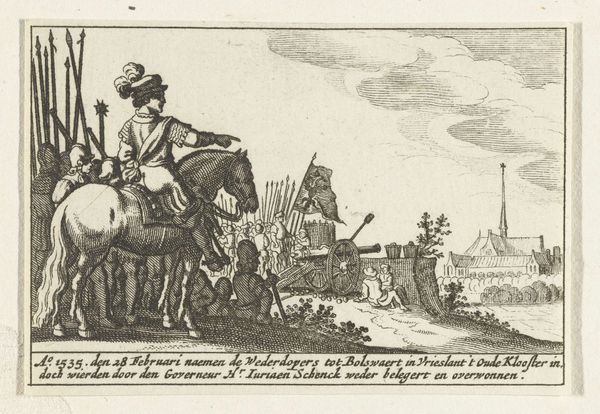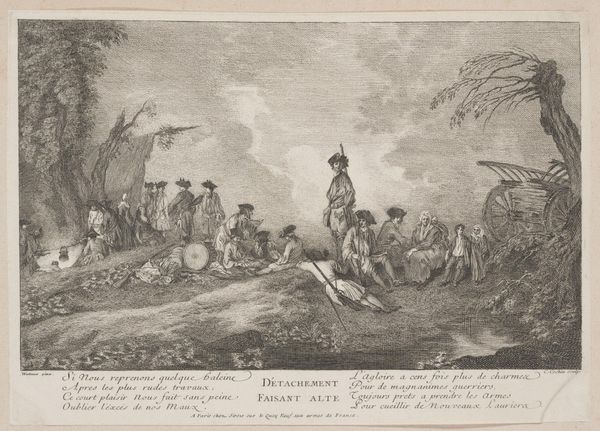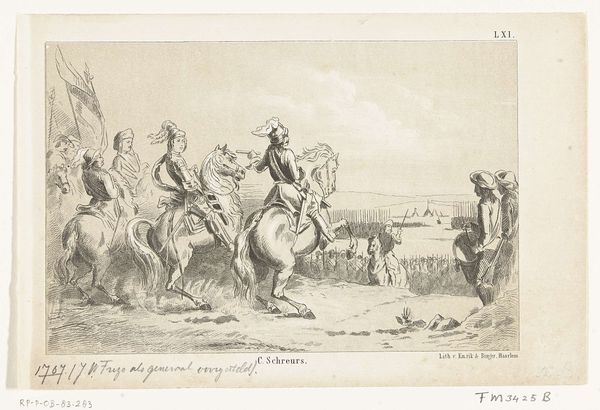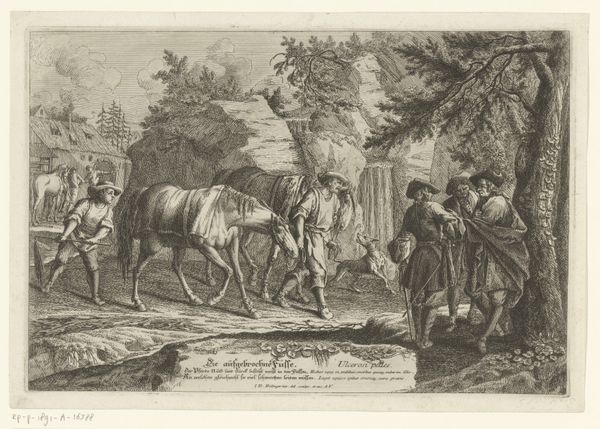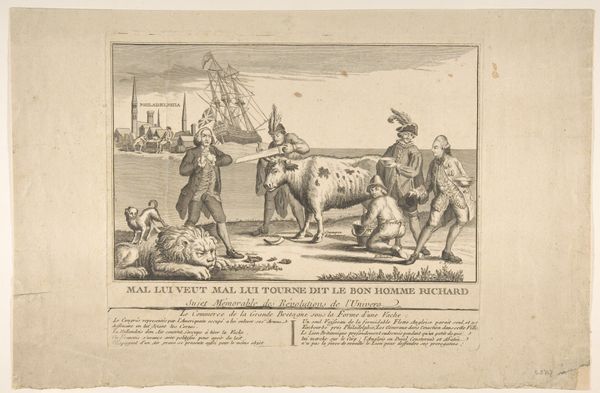
A Picturesque View of the State of the Nation for February 1778 1778
0:00
0:00
drawing, print
#
drawing
#
toned paper
#
light pencil work
#
quirky sketch
#
ship
# print
#
pencil sketch
#
sketch book
#
personal sketchbook
#
pen-ink sketch
#
men
#
sketchbook drawing
#
storyboard and sketchbook work
#
sketchbook art
Dimensions: plate (trimmed at bottom): 4 7/8 x 7 1/2 in. (12.4 x 19 cm) sheet: 4 7/8 x 7 7/8 in. (12.4 x 20 cm)
Copyright: Public Domain
Curator: Here we have "A Picturesque View of the State of the Nation for February 1778," a drawing dating back to... well, February 1778, created by an anonymous hand. The Metropolitan Museum of Art holds it. Editor: My first impression is that it feels like a chaotic visual riddle. It’s unsettling, yet there's a quirky humor in the drawing style, and a rather unique narrative is conveyed, seemingly about the American Revolution. Curator: Note how the artist uses stark contrasts, employing what seems like light pencil work on toned paper to define forms. The composition, a series of vignettes across a single plane, creates a deliberate visual tension, almost a fracturing of the narrative. We must decode the arrangement of the figures. Editor: Absolutely. This isn’t just about aesthetic tension. The cow being sawed in half becomes a potent symbol of a nation divided. Notice how the figures surrounding the cow represent different factions or nations vying for control during the Revolution? The absurdity underscores the human cost of political struggle. I see Britain hacking at the cow/colonies while others, France and Spain presumably, try to capitalize from its division. Curator: A fine interpretation. If we accept this perspective, the lion could represent England; languishing as the other powers dismember what was once its primary source of resources and pride. Observe the symbolism in the details. Note, as well, the balance of the sketch composition overall. Editor: I find that reading deeply into this visual landscape reveals anxieties of the period--fear of disintegration and uncertainty. Is this artist attempting to create some sort of historical or national satire? Curator: That might be its function. It’s the balance of realistic rendering with the absurdly humorous—or perhaps morbid. Editor: True, the 'sketchbook art' quality makes it both immediate and intimate, almost as though we are peering into the artist's private, politically charged, thoughts. But its power comes from how it still resonates with contemporary struggles of power. Curator: Precisely, and through attention to its careful, albeit frantic construction, the work stands out both visually and as an interesting piece of political commentary.
Comments
No comments
Be the first to comment and join the conversation on the ultimate creative platform.
